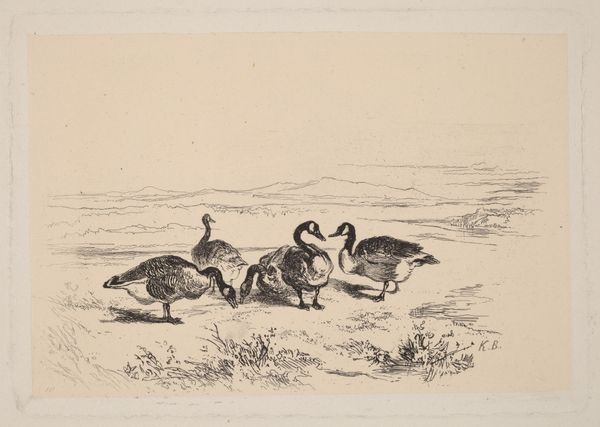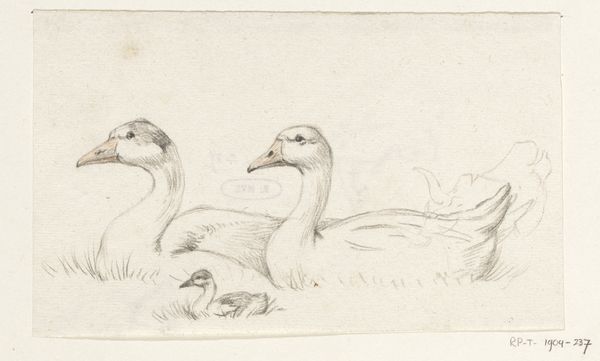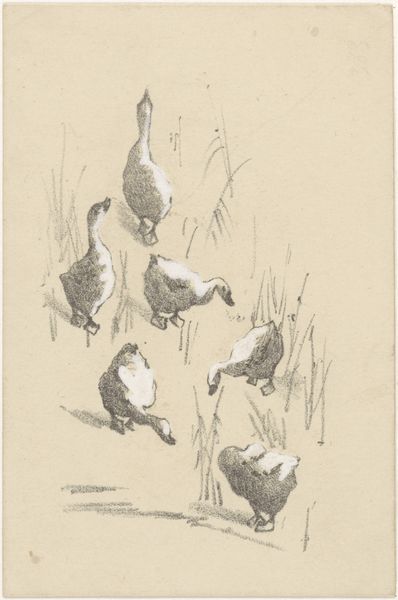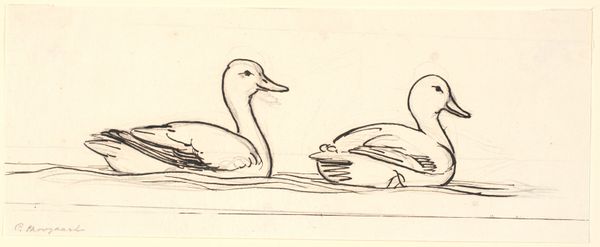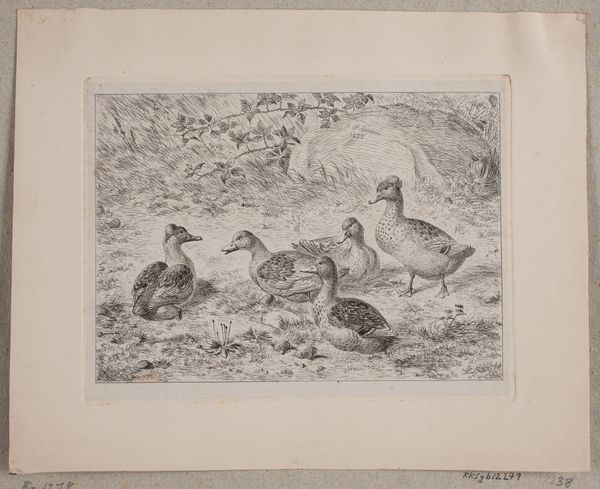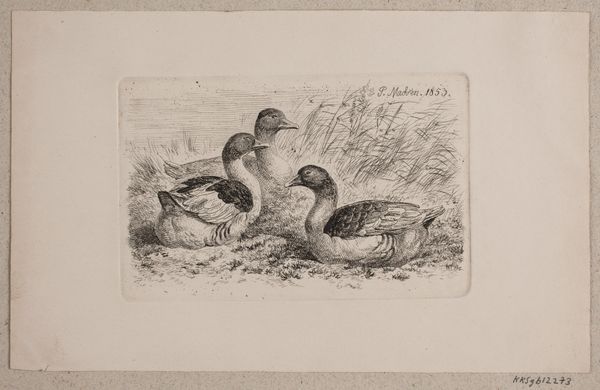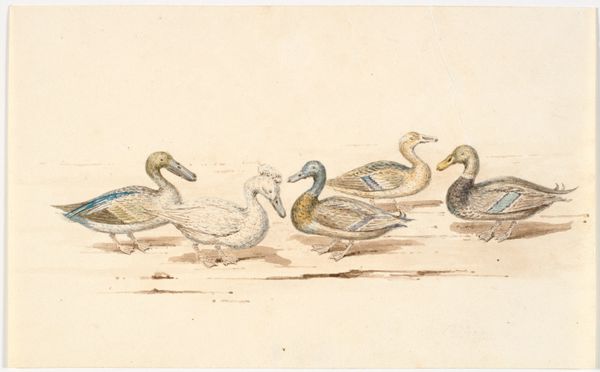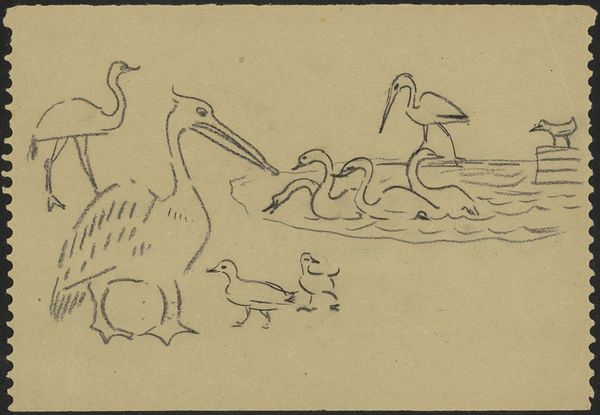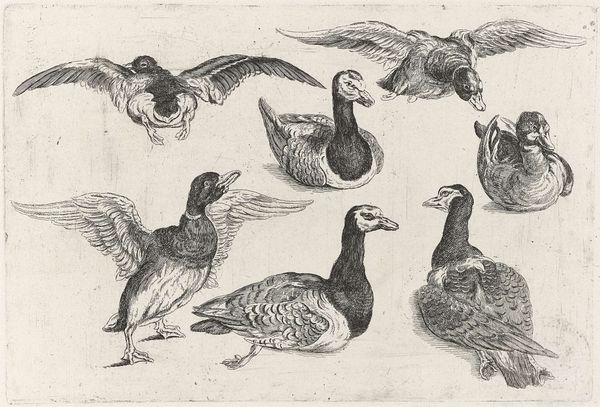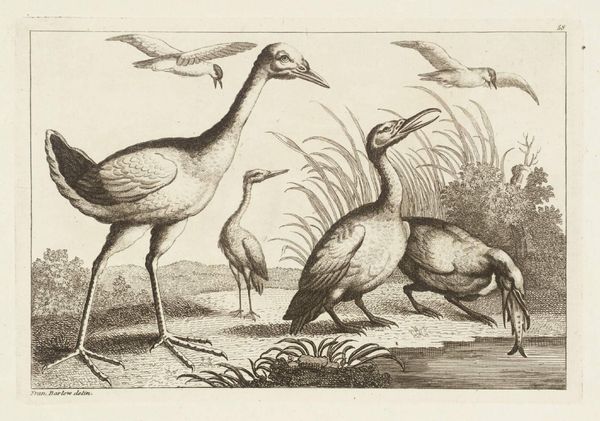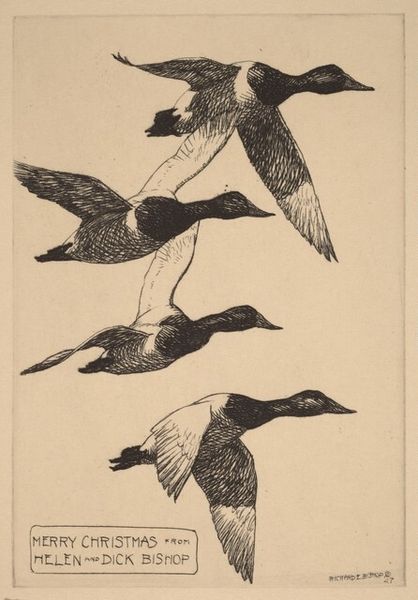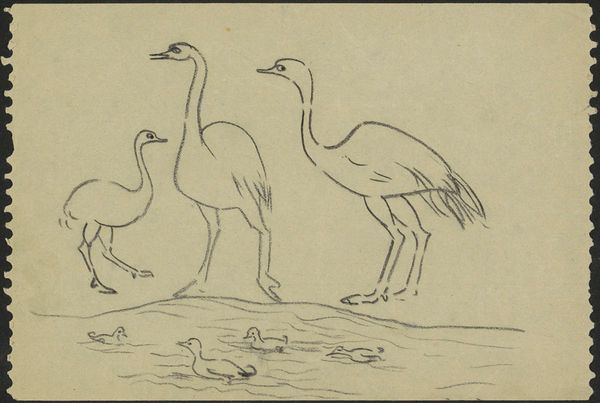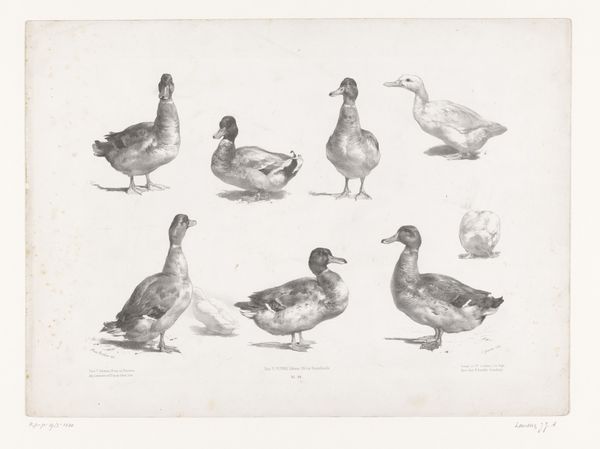
drawing, pencil
#
drawing
#
landscape
#
bird
#
romanticism
#
pencil
#
realism
Dimensions: 3 1/8 x 5 1/16 in. (7.9 x 12.9 cm)
Copyright: Public Domain
Curator: Here we have Shepard Alonzo Mount’s "Wild Geese," a pencil drawing, dating sometime between 1804 and 1868. It's currently held at the Metropolitan Museum of Art. Editor: My first impression is one of serenity and understated beauty. The monochromatic palette creates a muted effect, drawing focus to the careful composition. Curator: Absolutely. Considering Mount’s commitment to working from nature, it’s remarkable how the limitations of pencil emphasize form and texture. Notice the contrasting strokes; rapid, scribbled marks depict the grasses, compared to the controlled shading used to render the geese. There is clear intentionality in this variation. Editor: Right, the context here, of course, shapes everything. It speaks volumes about the American experience in that era, evoking both the romance and the stark realities. Beyond just pretty waterfowl, the work captures the landscape that was foundational to economic and cultural life at the time, when Americans had a profound dependency upon natural resources. Curator: Certainly. The work is inherently bound to modes of artistic production of its time. The very materiality – the paper, the graphite – speaks to particular economies. Were they domestic or imported materials? Who had access to these commodities and the artistic training to use them? These questions must be explored. Editor: And thinking about the relationship between humanity and nature, we have to remember that the mid-19th century in America was a period defined by expansion, industrial growth, and the subjugation of marginalized groups. Whose access to these landscapes are represented or, more likely, erased? Curator: That’s precisely the point. By carefully examining the material conditions, the artistic labor involved, and the social forces shaping the artistic field, we uncover some fascinating layers of meaning here. Editor: Exactly. By understanding the intersecting socio-historical threads that comprise this artwork, we start to unravel narratives of labor, identity, and power so relevant today. Curator: This close analysis reframes a seemingly simple drawing into an eloquent historical object. Editor: Absolutely, allowing a deeper understanding of the broader historical trajectory informing our contemporary existence.
Comments
No comments
Be the first to comment and join the conversation on the ultimate creative platform.
